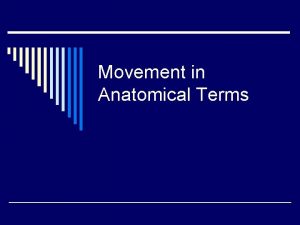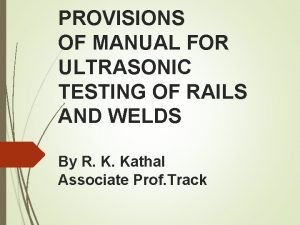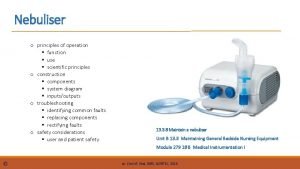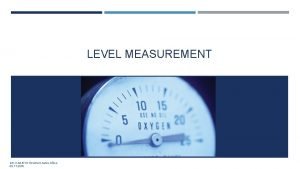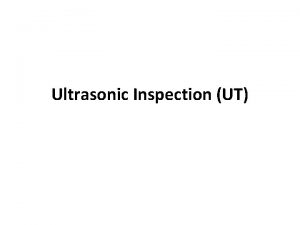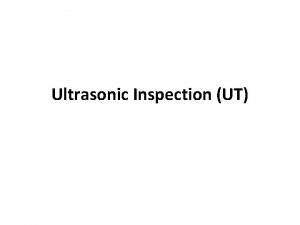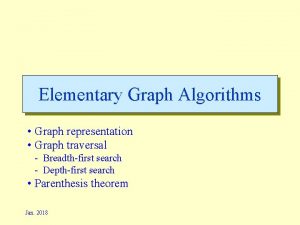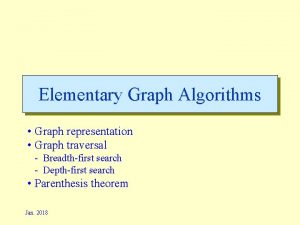Kinematics Demo Ultrasonic locator Graph representation Kinematics Position












- Slides: 12

Kinematics Demo – Ultrasonic locator Graph representation

Kinematics • Position • Displacement x= x 2 - x 1 • Speed = distance traveled / time elapsed • Velocity = displacement / time elapsed v = (x 2 - x 1)/(t 2 - t 1) = x/ t • Instantaneous velocity v = lim x/ t t 0

Acceleration • • Average Acceleration a = v/ t Instantaneous Acceleration a = lim v/ t t 0

Position as a function of time. • Calculate the average velocity from such a graph?

Position and velocity as a function of time. Position as a function of time. Calculate the instantaneous velocity from such a graph.

Velocity and Position as a function of time. Velocity as a function of time. How to calculate the displacement from such a graph?

Velocity as a function of time. Calculate the average velocity from such a graph.

Velocity and acceleration as a function of time. Velocity as a function of time. Calculate the average and instantaneous acceleration from such a graph.

Position, velocity and acceleration as a function of time. A simple example: The motion with constant acceleration

Q 1. Distance and Displacement 1. 2. 3. 4. A person travels from one point A in space to another B. The magnitude of the displacement is: either greater than or equal to always greater than always equal to either smaller than or equal to the distance traveled.

Q 2: Velocity and displacement When the velocity decreases from +5 m/s to zero, the displacement is 1) zero; 2) positive; 3) negative; 4) undecided.

Q 2. Velocity and acceleration 1. If one is positive the other one has to be positive. 2. If one is equal zero at some time t, the other has to be zero. 3. Their signs are independent. 4. Acceleration is always smaller then velocity.
 Aplusphysics kinematics-horizontal kinematics
Aplusphysics kinematics-horizontal kinematics Ballet terms and positions
Ballet terms and positions Fundamental position vs anatomical position
Fundamental position vs anatomical position Lying fundamental position
Lying fundamental position Ultrasonic welding meaning
Ultrasonic welding meaning Ultrasonic welding
Ultrasonic welding Ultrasonic testing principle
Ultrasonic testing principle Dfwo and dfwr full form
Dfwo and dfwr full form Venturi effect
Venturi effect Ultrasonic level sensor advantages and disadvantages
Ultrasonic level sensor advantages and disadvantages Ultrasonic nebulizer working principle
Ultrasonic nebulizer working principle Ultrasonic range finder definition
Ultrasonic range finder definition Large volume jet nebulizer
Large volume jet nebulizer


